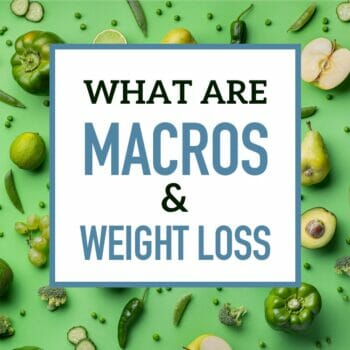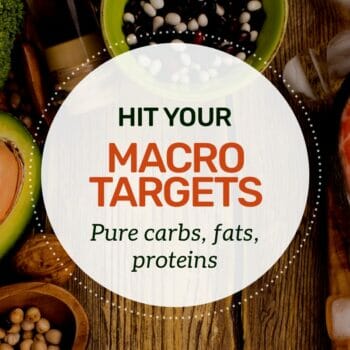Carb Cycling While Flexible Dieting
I’m often asked about carb cycling while doing flexible dieting or counting macros. I’m not a believer in the strictest form of the concept – it is another rigid dieting regimen.
A flexible, macros-based approach seeks to break you free from such restrictions – and achieves that same goal.
What is Carb Cycling?
The basic premise of carb cycling involves alternating between high-carb and low-carb days.
- High-carb days are typically planned on workout days to replenish glycogen stores and support muscle growth.
- Low-carb days aim to maximize fat burning and increase the body’s insulin sensitivity.
Are carbs good or bad?
I refute the dieting myth that carbs are “bad” and are why people get fat.
Regularly eating more energy than your body requires makes you fat, not carbs alone.
Extra energy might come from all three macros and alcohol, so carbs can’t be solely blamed.
There’s also no scientific evidence that a low-carb diet produces better long-term weight loss than any other form of dieting. The only thing all diets can agree on is the necessity of a calorie deficit.
However, there are arguments for not eating the same carbs daily. Our bodies are highly adaptable, and fixed diets are never good. They work initially, but once the body adapts, they lead to weight loss plateaus.
We always want to keep our bodies “guessing” when eating and exercising. Carb cycling, in theory, is trying to accomplish this, but there is an easier way 😀.
Carb cycling vs macro counting
We have now coached thousands of clients. They have counted macros (rather than exclusively carb-cycling), and many have achieved amazing transformations.
In a way, these clients have been doing carb-cycling – but they haven’t had to make an unhealthy focus on carbs alone.
Carb cycling with a flexible macros-based diet
Counting macros teaches you to cycle your carbs intuitively. We don’t even need to use the phrase “carb cycling” because it’s already built into the process.
You start by calculating your macros – based on your total daily energy expenditure. This will give you a daily calorie target.
- On a rest day, you eat FEWER carbs because the body needs less energy to operate.
- On an exercise day, you eat MORE carbs because your body needs more energy to fuel the exercise and your metabolism.
Example
A 30-year-old, 170-pound, and 63-inch tall woman aims to lose weight. She has rest days, moderately active days, and very active days. According to our macro calculator, here’s how her carb amounts would break down.
- Rest days: 123 grams
- Moderate exercise days: 200 grams
- Very active days: 238 grams
The more she exercises, the more energy her body requires and the more carbs she should consume.
These carbs are still consumed within an overall macro ratio, producing a 20% calorie deficit.
That’s what’s great about counting macros (or flexible dieting). In contrast to traditional diets with a set calorie intake, your carbohydrate consumption changes daily.
Try the macro calculator to get started.
View article sourcesSources
- Foster, G. D., Wyatt, H. R., Hill, J. O., McGuckin, B. G., Brill, C., Mohammed, B. S., ... & Klein, S. (2003). A randomized trial of a low-carbohydrate diet for obesity. New England Journal of Medicine, 348(21), 2082-2090. Study link
- Trexler, E. T., Smith-Ryan, A. E., & Norton, L. E. (2014). Metabolic adaptation to weight loss: implications for the athlete. Journal of the International Society of Sports Nutrition, 11(1), 1. Study link


 How to track macros with Cronometer
How to track macros with Cronometer What Are The Best Macros For Weight Loss?
What Are The Best Macros For Weight Loss? How To Count Macros on a Vegan, Vegetarian, or Plant-Based Diet
How To Count Macros on a Vegan, Vegetarian, or Plant-Based Diet Out of a Macro For the Day? Here’s What to Eat
Out of a Macro For the Day? Here’s What to Eat Macros for Gaining Muscle and Cutting Fat
Macros for Gaining Muscle and Cutting Fat